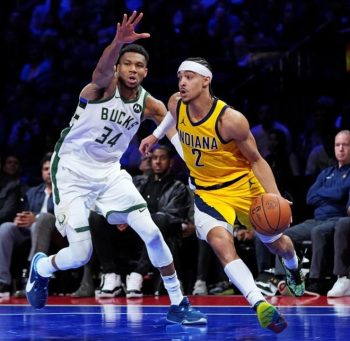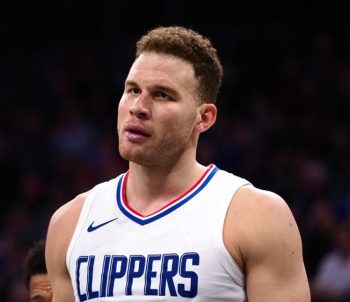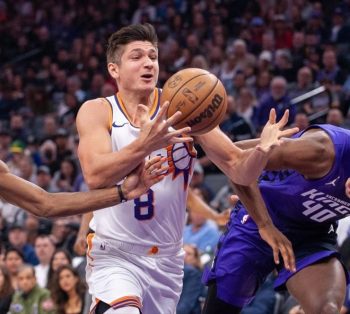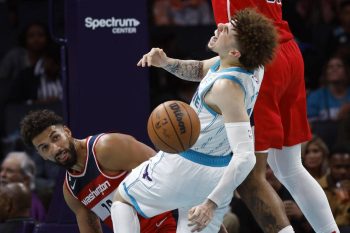NBA
Two-Way Contracts Offer New Path to NBA

Every June, 60 prospects are snatched up in the NBA Draft — few are transcendent, some are budding stars and most are just looking to find their way in the sport’s most competitive league. For the rest of pack, those that go undrafted are left with less than conventional methods to reach their ultimate goal. Avenues like Summer League and the soon-to-be-rebranded G-League are often the only way to gain admittance into the NBA, aside from taking a more lucrative deal overseas in hopes of proving their worth on another continent.
However, an addition to the new Collective Bargaining Agreement (CBA) has introduced another path to join the NBA ranks, and it’s already changed the dynamic of many pre-draft workouts. Two-way contracts will allow a team to essentially carry two more roster spots that won’t count against the salary cap. These players, who must have less than four years of NBA experience, can be swapped between the professional level and the G-League for up to 45 days in a season.
Since the NBA Combine last month, teams have gotten creative with their workouts, bringing in players that will, in all likelihood, go unchosen in next week’s draft. Even back in March, Basketball Insiders’ Steve Kyler noted that teams had already started inquiring about the availability of currently unsigned players for summer league rosters. With the offseason now officially in full swing, it’s never too early to start scouting for the dog days of summer.
For example, the Brooklyn Nets, who haven’t been shy about signing players out of the D-League over the last two seasons (Spencer Dinwiddie, Quincy Acy, Archie Goodwin and Sean Kilpatrick, among others), own just one second round pick in this year’s draft (No. 57), but that hasn’t stopped them from working out any and all intriguing prospects.
As our own Michael Scotto and Cody Taylor have reported, the Nets have brought in a slew of candidates for workouts, including Iowa’s Peter Jok, a 23-year-old sharpshooter that hasn’t shown up on either of the major mock draft boards as of late. While the Nets may not opt to use an important second rounder on a wildcard like Jok, having the ability to secure his potential on a two-way contract could be a game-changer. Of course, these deals are to incentivize young players to hone their skills in America rather than overseas by way of increased wages, but it will undoubtedly benefit the NBA franchises as well.
The Washington Wizards currently hold just the No. 52 selection in the NBA Draft, but they’ve been extremely busy with workouts in that late second round and undrafted range as well. Candace Buckner of The Washington Post summed the situation up succinctly in a column last week:
“Instead, the Wizards have attracted many players who will likely become free agents after June 22. Of the 18 players who participated in three known workouts, only two are projected in the top 60 by the leading website draftexpress.com. For every Frank Mason III (Kansas) and Tyler Dorsey (Oregon), there has been a parade of little-known names such as Justin Robinson (Monmouth) and Daniel Dixon (William & Mary).”
For a team that’s already way over the salary cap before matching any restricted free agent offer sheets for Otto Porter Jr. and Bojan Bogdanovic, these two-way contracts will allow Washington to mold a flier without taking up a valuable roster spot. But it doesn’t end with just the Wizards and Nets either. Day after day, it seems as if a new list of intriguing workouts is revealed — whatever your team needs, this draft may just have it.
There are four-year seniors like Villanova’s Kris Jenkins, Wisconsin’s Bronson Koenig and Gonzaga’s Przemek Karnowski, all looking for an opportunity with their mature, seasoned savviness. There are those that have fallen from grace in recent years like Maryland’s Melo Trimble, or mid-major prospects like Southeast Missouri State’s Antonius Cleveland and Kent State’s Jimmy Hall — the running list goes on and on. Whether they’re working out for the Nets, who need all the help they can get, or a playoff-ready franchise like the Los Angeles Clippers, it makes no major difference. In today’s evolving NBA landscape, taking advantage of every opportunity to scout a potential piece isn’t just a privilege, now it’s a necessity.
The road to the NBA after going undrafted is difficult, but it’s not impossible. Jeremy Lin, now the Nets’ starting point guard, went undrafted in 2010 after an outstanding career at Harvard. Following a solid performance that summer — which included a thrilling head-to-head battle with the No. 1 overall pick, John Wall — Lin accepted an offer to join the Golden State Warriors. Of course, Lin averaged just 9.8 minutes in 29 games in 2010-11 and was waived before the next season began in December, but that set the stage for Linsanity, his unforgettable red-hot streak with the New York Knicks that would guarantee him a paycheck for years to come.
Franchises have always looked to unearth future options late in the draft, but roster sizes and other roadblocks haven’t allowed for experimentation with unchosen prospects very often. Even with the 10-day contract, which gives NBA teams the ability to test drive a D-League player for up to 20 days before signing him permanently, it’s still been tough for undrafted players to break through and stick around.
Just ask Yogi Ferrell, who was waived twice by the Nets before landing a multi-year deal with the Dallas Mavericks in February. While Ferrell will have no qualms about his landing spot in Dallas — the Indiana senior went undrafted in 2016 — the Nets could’ve easily held onto to the speedy point guard if the two-way contracts existed last winter. At the time, the Nets were struggling after long-term injuries to both Greivis Vasquez and the aforementioned Lin, but general manager Sean Marks had to act after his first 10-day deal was up.
As both our Eric Pincus and Larry Coon have pointed out, it’s hard to believe Ferrell would be anywhere but Brooklyn if the changes to the CBA came a little earlier.
While only a sampling of the NCAA’s best players will be selected on June 22, a slew of two-way contracts should quickly follow. Whether these fringe second round selections impress during their group workouts or shine brightly in a forthcoming summer league, it presents a favorable situation for every type of team. Underperforming franchises will get two more rolls of the dice in their never-ending pursuit of the rebuild, while overachieving franchises won’t have to sacrifice a potential future piece in the name of a veteran contributor while in win-now mode.
Of course, getting signed to a two-way contract is far from a guarantee of success in the NBA, but this will open the door for an extra slate of jobs right out of the gate this summer. These contracts will give franchises across the league the opportunity to grow an NBA-worthy rotation player without the worry of another team snatching them away. As the pre-draft workouts have already shown, franchises will leave no stone unturned as they search to fill these new roster spots.
Often times, athletes, particularly those that go undrafted, just need to find the right spot and, most importantly, somebody that believes in their skillset. With the extra roster spots, improved wages and the ability to be as patient as needed with a raw prospect, the two-way contracts have already proven to be a win-win for all parties involved.











